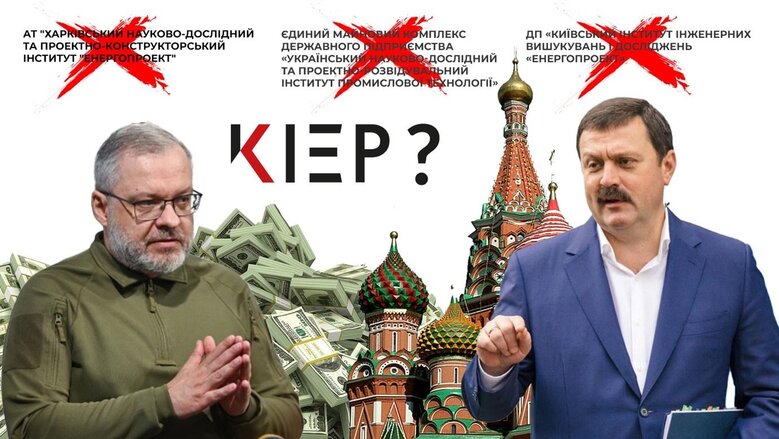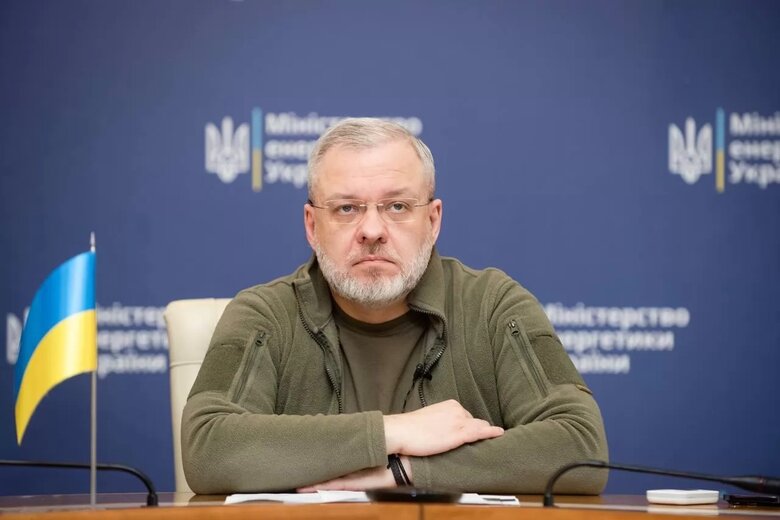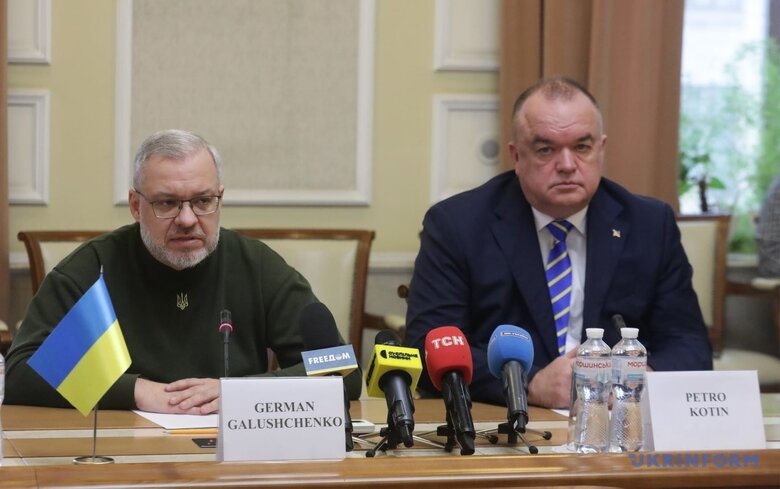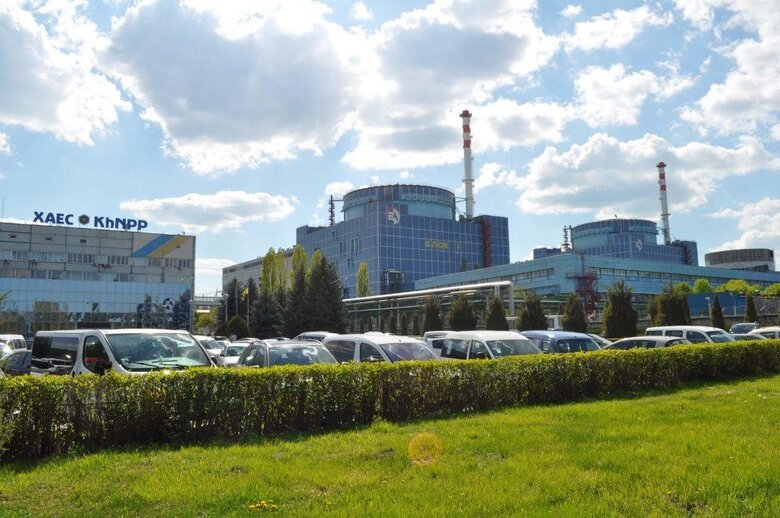Killers of Ukraine’s energy sector
President of Ukraine Volodymyr Zelenskyy said that this summer Ukraine and its partners should prepare an action plan based on the Peace Formula to restore energy security in the country. He said this at a press conference in Warsaw: "Our Polish partners are fully informed about the situation in Ukraine’s energy system. Already this summer, we are going to present a prepared action plan under the Peace Formula to return energy security to Ukraine."
A few days earlier, it was reported that even the Headquarters of the Supreme Commander-in-Chief meeting had discussed the development of a plan to prepare the energy sector for work in autumn and winter conditions.
Statements, large-scale plans, press conferences... Only Ukrainians continue to be without electricity, and winter will come again unexpectedly, exposing the helplessness and emptiness in the minds of the country's energy sector leaders.
Since the beginning of the full-scale invasion, Russia has destroyed more than half of Ukraine's energy generation capacity: it has fallen from 55 GW to an estimated 11-12 GW, and most of the country's thermal and hydroelectric power plants have been destroyed by Russian missile attacks. The largest nuclear power plant in Europe, Zaporizhzhia, was surrendered to the enemy without resistance or a fight.
However, the destruction of the Ukrainian energy sector is not only due to military operations. It is also being destroyed by corruption, unprofessional politics, and inconsiderate and incompetent decisions by officials of the Ministry of Energy.
Therefore, it is not surprising that in the face of a terrible war, the leadership of the Ministry of Energy and Energoatom failed to protect and ensure the restoration of Ukraine's energy sector and nuclear industry.
Perhaps everyone has seen Minister Halushchenko sadly talking about the destruction of energy facilities by the enemy on the channels of the United Marathon. But no one has seen his report on the "used" billions that were supposed to be spent on protecting the energy sector from enemy attacks. No one has heard his report on the use of the huge financial assistance provided by our partners to restore and develop Ukraine's energy sector.
Halushchenko Herman
What was the minister doing in 2021, when Russia was intensively preparing for war, undisguised by anyone? What was done in the first year and a half of the war to protect the generation and power system? Why did its units continue to operate at full capacity for six months after the occupation of Zaporizhzhia NPP? At the same time, the plant was on the verge of a serious accident several times. Only dedication and the highest qualification of the personnel saved the country from a nuclear disaster.
The country's top political leaders still have no idea how many steps away from disaster the country was then. And the Minister and President of Energoatom, with the blessing of the Nuclear Regulatory Inspectorate, were making money by exporting electricity, saving Europe from freezing in the summer. Do the National Security and Defense Council (NSDC), the Prosecutor General's Office, the NABU, the SBI, the SSU and other fighters for the purity of our ranks still not know about this?
The same authorities have not yet dealt with large-scale corruption in the energy sector, with inflated estimates and purchase prices.
One can mention the construction of the Centralized Spent Fuel Storage Facility (CSFSF) with additional billion-dollar funding, bypassing tender procedures and the Prozzoro electronic platform. By the way, Minister Halushchenko and Energoatom President Kotin have publicly staged performances several times to launch this "object of the century," although it has strangely not been launched.
And where are the new nuclear units that should already be operating? After all, both geniuses of investment processes promised to build them in 2.5-3 years, and 4 years have passed since the first announcement in 2020!
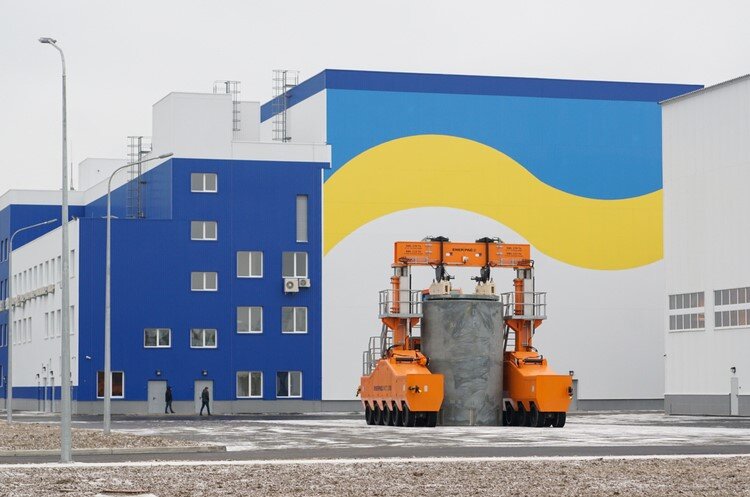
Centralised Spent Fuel Storage Facility (CSFSF)
In this article, I want to discuss not corruption schemes, but strategic issues that affect the survival and future of both the national energy sector and the country as a whole. No electricity means no country. Maybe this will eventually be realized by those at the top?
Rising electricity tariffs are an important topic for every Ukrainian. Everyone remembers President Zelensky's assurances that there would be no increase until the war is over. Along with the "necessary" rapid growth of tariffs, the Cabinet of Ministers sends a message that there is no money in the budget to pay social assistance and increase pensions in the face of high inflation and hryvnia devaluation. By the way, the Cabinet of Ministers does not explain where they found the money to increase the salaries of government officials.
The question is not even about tariffs as such. The question is what they should cover, what they actually cover, and how the money earned from electricity production and sales is used. We need to answer people why they don't have electricity if they pay for it regularly.
Hours-long power outages, combined with significant tariff increases, affect not only the living conditions and empty wallets of Ukrainians. This is a strike against the remnants of the industry, including the defense industry, against jobs, against the defense of the country!
With the destruction of the thermal and hydro generation "reliably protected" by the Ministry of Energy, the lion's share of consumption is covered, thank God, by undamaged nuclear power plants. The cost of electricity generated by them is quite stable. However, the management of the Ministry of Energy and Energoatom explain the increase in tariffs by the need to finance the completion of two power units at Khmelnytsky NPP. Surely they have already found the right nuclear reactors and even agreed on the price of their purchase?
We are talking about two Russian reactors that Bulgaria bought many years ago and then refused to use under pressure from the EU. Ukrainian energy is being pushed into dependence on Russia again. In fact, instead of lobbying for sanctions against Russia's Rosatom, the Minister of Energy is lobbying for the purchase of their incomplete equipment. We are not even discussing the need to obtain permission from Rosatom for Bulgaria to transfer reactors to Ukraine. The question is even different. What about the government's promise of closer accession to the EU? Are we being misled again, or is this another mega-grifting of billions of dollars and euros on facilities that will never be put into operation, since there is systematic opposition to the construction and operation of Russian reactors in the European Union? No one will joke about nuclear safety in Europe.
And what does the tariff increase have to do with the construction of new nuclear units?
Large energy facilities, especially nuclear ones, are built with loans (80-90% of the costs) and the current tariff has nothing to do with construction. It's a lie again. The loans will be repaid later, in 10-15 years, when the units are built. Our children and grandchildren will be repaying the loans for 30 years or more after the start of operation of the new units. It is the cost of new nuclear units that will be hidden in the tariffs of future years. And those who are running around looking for loans today must guarantee the lender that those future tariffs will ensure the repayment of the loan and interest on it. Does anyone believe that there will be those who will believe our creators of the Energy Strategy 2050?
The next question is: who will fix the Russian equipment and how? I have described in detail the absurdity and criminal danger of such projects of the Ministry of Energy earlier. But Halushchenko and Co. are not interested in the position of experts. Moreover, scientists and engineers prevent them from falsifying design and estimate documentation, as well as from "efficiently" using billions, blaming the lack of results on the war.
Unfortunately, all of this is far beyond the intellectual level and responsibility of those who manage the country's energy sector. The country is on the verge of destroying the project potential and scientific support of the industry. The top leadership has been dragged down to the level of Ostap Bender: "The West will help us!"
The government and the Ministry of Energy are probably unaware that a key criterion for the self-sufficiency and independence of the country's energy sector is the availability of powerful research and design institutions, as well as the country's ability to independently develop and build energy complexes. The scientific and design component is especially important for nuclear energy, where the lack of professional design and scientific support, even during operation and maintenance, can lead to large-scale problems.
Russia has always tried to attract Ukrainian nuclear scientists by creating the most attractive working conditions and salaries for them. The Russian special services, through their agents, did everything possible to compromise and stop the activities of our nuclear research centers, scientific and design institutes working in the energy sector.
In the context of the war and the large-scale destruction of the country's generating capacities, instead of preserving and supporting the unique scientific and design institutions necessary for energy recovery, the Ministry of Energy paralyzes their activities or simply destroys them, continuing to fulfill the tasks of the Russian special services.
The Ukrainian Scientific Research and Engineering Research Institute of Industrial Technology in Zhovti Vody, the only state institution in Ukraine that was created to provide scientific and design support for the uranium industry, was no longer needed by the Ministry of Energy. According to CMU Resolution No. 910-r as of 14.10.2022 initiated by Halushchenko, the institution was transferred to the State Property Fund. As a result, the Institute is in an organizational collapse and has effectively ceased to operate. The employees, who as of 10.06.24 numbered 51, work online, as the Institute has been disconnected from electricity and water supply since the end of 2022, which led to a complete shutdown. The last salary was paid in October 2022. The remaining specialists cannot even resign, as the institution has been without a management apparatus, accounting and HR services for a long time.
SE "Kyiv Institute of Engineering Surveys and Investigations "Energoproekt" specialized in research on nuclear and thermal energy. This institution was also transferred to the SPFU (State Property Fund of Ukraine). The result was a 10-fold staffing reduction, multimillion-dollar wage arrears, and the actual cessation of operations. However, the government stopped the privatization and transferred the institute for resuscitation to... the SSU. The SSU's specialization is far from nuclear power plant surveys and NPP design, so it makes more sense that counterintelligence officers were simply interested in a huge building in the capital.
Kharkiv Institute "Energoproekt" (KhIEP) has been implementing large-scale projects related to nuclear and thermal energy. As a general designer, the institute implemented projects for the construction of Zaporizhzhia and South Ukrainian nuclear power plants. During the Soviet era, the Kharkiv Institute "Energoproekt" was an elite design and scientific and technical institution, but now it has become a vivid example of the true priorities and "effective" management of the Ministry of Energy. KhIEP does not actually work, only makes small adjustments to old documentation. Most of the specialists have been dismissed, and the competence of the complex design of energy facilities has been lost.
Censor. NET reported on a press conference held by the management of the last operating Kyiv Research and Design Institute "Energoproekt" (KIEP), an institution known far beyond the country, the main developer and implementer of projects in the field of nuclear, thermal and renewable energy. The institute's leaders reported unprecedented pressure from officials of the Ministry of Energy, who are trying to block the activities and destroy the unique scientific institution. With the aim of forcing the institute into bankruptcy, the Ministry of Energy and Energoatom has blocked payments for completed contracts and stopped new orders. By refusing to make electronic copies, they are trying to seize the invaluable archival project documentation of the institute, collected over 90 (!!!) years of its work, which will inevitably lead to the shutdown of KIEP.
In order to break the resistance of scientists and designers, officials of the Ministry of Energy do not neglect provocations and abuse of office. For example, the Institute, which is recognized as a critical enterprise for the functioning of the energy sector and the country's vital activity, submitted a list of its employees to the Ministry of Energy for reservation. But instead of reservation, it received draft notices from the Ministry to appear in the TCR for all employees listed on the list.
According to Yurii Sapozhnykov, Chairman of the Board of KIEP, the Ministry of Energy is trying to destroy the last scientific and design institution in the national energy complex to prevent independent examinations of adventurous projects, inflated estimates, and large-scale corruption schemes. The situation is getting worse on the eve of receiving huge resources for the construction of the 3rd and 4th power units at Khmelnytskyi NPP. According to the head of the Institute, the Ministry of Energy and Energoatom needs pocket pseudo-structures that will sign any conclusions for them.
The KIEP team is begging for help to stop the criminal arbitrariness of the Ministry of Energy officials and to prevent the destruction of a unique institution working in the energy sector.
If you look at the list of energy companies managed by the Ministry of Energy, it is difficult to find companies that are developing steadily and have prospects for growth. This leads to disappointing conclusions about the prospects of the industry as a whole. Regular power outages, tariff increases, failed preparations for the heating season, and large-scale corruption are just a partial list of the "achievements of the current team of the Ministry of Energy." In the context of Russia's deliberate destruction of Ukraine's energy infrastructure, destruction of maneuvering capacities and the crisis in the energy system, we cannot allow the remnants of national science to be eliminated.
We should not hope that the war will write off everything and everyone.
For more than two years now, the media has been reporting that the energy sector is run by an organized criminal group headed by a former People's Deputy who is also the head of our enemy's agent network in Ukraine.
Those who are accused are silent and do not go to the courts or the prosecutor's office. But the worst thing is that the country's leaders are silent, as are the special services. Is the energy sector really run by enemy services through their proxies? Or is it all good, all this is fiction - the energy sector is in the hands of decent people who are loyal to Ukraine (well, they make mistakes, who doesn't). Well, at least say something! Thousands of power engineers, devoted to their homeland, are fighting for it, saving it at the cost of their health and lives. Answer them, who is in charge of them?
What does the future hold for Ukraine's electricity sector? Will it survive and will Ukraine survive with it? This is the only way the question can be asked today. There is no other way. The games are over. And the last thing we need now are "nice" statements and appeals. We need action, we need full mobilization of forces and intelligence to save the situation. Is there such an understanding "at the top"? Or, as always, life will tell...
Steinberg Mykola Oleksandrovych
Former Deputy Minister of Energy (2002-2006), Chief Engineer of the Chornobyl NPP since 1986 (after the accident), member of the IAEA Working Group on the accident management at the Fukushima NPP

